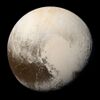Astronomy:2014 AN55
| Discovery [1] | |
|---|---|
| Discovered by | Pan-STARRS 1 |
| Discovery site | Haleakala Obs. |
| Discovery date | 5 January 2014 (first observed only) |
| Designations | |
| 2014 AN55 | |
| Minor planet category | TNO [2] · SDO [3] distant [1] · p-DP [4] |
| Orbital characteristics [2] | |
| Epoch 23 March 2018 (JD 2458200.5) | |
| Uncertainty parameter 3 | |
| Observation arc | 10.24 yr (3,741 days) |
| Earliest precovery date | 12 March 2005 |
| |{{{apsis}}}|helion}} | 78.400 AU |
| |{{{apsis}}}|helion}} | 34.389 AU |
| 56.395 AU | |
| Eccentricity | 0.3902 |
| Orbital period | 423.51 yr (154,688 d) |
| Mean anomaly | 316.10° |
| Mean motion | 0° 0m 8.28s / day |
| Inclination | 9.4261° |
| Longitude of ascending node | 283.88° |
| 306.82° | |
| Physical characteristics | |
| Dimensions | 561 km (estimated)[4] 671 km (estimated)[3] 367–821 km (for H=4.3 and 0.25~0.05 albedo)[5] |
| Geometric albedo | 0.09 (assumed)[3][4] |
| Absolute magnitude (H) | 4.1[2][1] · 4.3[6] · 4.6[4] |
2014 AN55 is a trans-Neptunian object and a dwarf-planet candidate from the scattered disc, located in the outermost region of the Solar System, approximately 600 kilometres (370 mi) in diameter. It was first observed on 5 January 2014, by astronomers of the Pan-STARRS survey at Haleakala Observatory on the island of Maui, Hawaii, in the United States.[1]
Orbit and classification
2014 AN55 belongs to the gravitationally perturbed population of scattered disc objects,[3] which, at their closest approaches, come close to Neptune's orbit at 30 AU, but their farthest distances reach many times of that.
It orbits the Sun at a distance of 34.4–78.4 AU once every 423 years and 6 months (154,688 days; semi-major axis of 56.4 AU). Its orbit an eccentricity of 0.39 and an inclination of 9° with respect to the ecliptic.[2] The body's observation arc begins with a precovery taken by the Sloan Digital Sky Survey on 12th March 2005.[1]
Physical characteristics
Diameter and albedo
According to American astronomer Michael Brown, 2014 AN55 is a likely dwarf planet. He estimates a diameter of 561 kilometers, based on an absolute magnitude of 4.6 and an assumed albedo of 0.09.[4] The Johnstons's Archive assumes a similar albedo and calculates a diameter of 671 kilometers[3], which correlates with the MPC/JPL magnitude of 4.1.[5] Using the intermediate 4.3 mag AstDyS datum, and a typical potential albedo range of 0.05 to 0.25, a wider range of possible sizes from 367 to 821 km can be calculated.
Numbering and naming
This minor planet has neither been numbered nor named.[1]
References
- ↑ 1.0 1.1 1.2 1.3 1.4 1.5 "2014 AN55". Minor Planet Center. https://www.minorplanetcenter.net/db_search/show_object?object_id=2014+AN55. Retrieved 16 February 2018.
- ↑ 2.0 2.1 2.2 2.3 "JPL Small-Body Database Browser: (2014 AN55)". Jet Propulsion Laboratory. https://ssd.jpl.nasa.gov/sbdb.cgi?sstr=3755680. Retrieved 16 February 2018.
- ↑ 3.0 3.1 3.2 3.3 3.4 Johnston, Wm. Robert (30 December 2017). "List of Known Trans-Neptunian Objects". Johnston's Archive. http://www.johnstonsarchive.net/astro/tnoslist.html. Retrieved 16 February 2018.
- ↑ 4.0 4.1 4.2 4.3 4.4 Michael E. Brown. "How many dwarf planets are there in the outer solar system?". California Institute of Technology. http://web.gps.caltech.edu/~mbrown/dps.html. Retrieved 16 February 2018.
- ↑ 5.0 5.1 "Conversion of Absolute Magnitude to Diameter for Minor Planets". Archived from the original on 23 July 2011. https://web.archive.org/web/20110723191750/http://www.physics.sfasu.edu/astro/asteroids/sizemagnitude.html. Retrieved 15 August 2019.
- ↑ "2014 AN55". https://newton.spacedys.com/astdys/index.php?n=2014AN55&pc=1.1.0. Retrieved 15 August 2019.
External links
- List Of Centaurs and Scattered-Disk Objects, Minor Planet Center
- Discovery Circumstances: Numbered Minor Planets (1)-(5000) – Minor Planet Center
- 2014 AN55 at AstDyS-2, Asteroids—Dynamic Site
- 2014 AN55 at the JPL Small-Body Database



